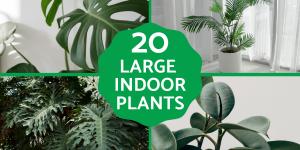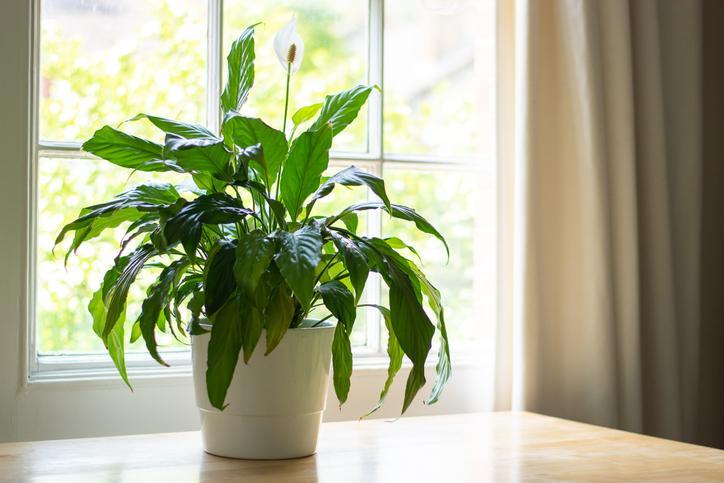Plants That Absorb Moisture


Humidity accumulation in closed spaces, such as apartments or houses, is an evil that affects us all too often. Dampness can occur if the house is poorly ventilated, wrongly orientated, or if you simply live in places with a humid climate. This excess moisture, in addition to causing bad odors, can be very harmful to health, as it encourages the multiplication of bacteria and the appearance of fungi or mold. The latter can be especially dangerous for people with respiratory conditions or problems and, in addition, fungi can act as an aggravating factor in allergies.
Fortunately, a natural difficulty can also be fought with a natural solution. Dehumidifying plants can be excellent allies in the fight against humidity at home.
This article from thedailyECO explains what plants to use to absorb humidity indoors.
Peace lily
Peace lily (Spathiphyllum) is a species of plant in the family Araceae, which includes more than 30 species. It is a tropical plant native to some parts of the Americas, such as the Caribbean, and does not tolerate frost or currents, so it is common to grow it indoors. It does not need much light and has the ability to absorb moisture through its leaves, making it a good choice for spaces with low light. When its leaves turn brown, it is a sign that the plant requires more water, a more protected location, or fertilizer.

Spider plant
Spider plant (Chlorophytum comosum), also known as spider ivy, ribbon plant and hen and chickens, is a species of evergreen perennial flowering plant in the family Asparagaceae. These plants are very popular houseplants because they are able to absorb ambient moisture and take up most of the water they need from the air. Not only do they not require much watering in a humid location, but they do not require much light or demanding care and are also able to remove formaldehyde from the environment.

Tillandsia
Tillandsia is a genus of about 650 species of evergreen perennial flowering plants in the family Bromeliaceae. Like all epiphytic plants, Tillandsia absorbs moisture from the environment to hydrate itself because it has no roots that anchor themselves to the soil and extract nutrients or water from it.
It is one of the plants with the greatest dehumidification capacity, and since it does not require a substrate, we have much more freedom to place it. They are easy to cultivate and require only the occasional addition of special fertilizers, very little watering and a little spraying in dry environments.

Calathea
Calathea is a genus of flowering plants belonging to the Marantaceae family. As tropical plants, calatheas need a humid environment to thrive. In fact, they prefer humidity of 50 percent or more, with more sensitive varieties requiring higher humidity, about 60 percent. This extremely eye-catching, colorful foliage plant is famous for its low light and moisture requirements, making it a top choice for moist bathrooms.

Neanthe bella palm or parlour palm
Chamaedorea elegans, the Neanthe Bella palm or Parlour palm, is a small species of palm tree native to Central America and Mexico, known not only for its ability to absorb moisture from the environment, but also to purify the air. It's no wonder that the salon palm is one of the best-selling houseplants in the world. Its common name comes from the fact that it thrived in Victorian greenhouses and dark, unheated apartments where exotic plants were grown and cultivated, a practice that was fashionable at the time.
In its natural environment it reaches a height of up to 3 meters, but in a pot it becomes much smaller. It likes light potting soil, good humidity and moderate lighting without direct sunlight, but also tolerates some dryness, high humidity or reduced lighting. An average humidity of 20 to 50% is tolerated well.

Mentha
Mentha, also known as mint, is a genus of plant in the Lamiaceae family. Mints are known for their aroma, but they also have the ability to absorb moisture from the soil.
Their ability to grow in shady or semi-shady areas and their high water requirements make them ideal for turning damp areas of a garden into a green corner with a very pleasant smell. They also absorb a lot of moisture from the environment, making them ideal for the kitchen, bathroom or living room. If you grow your own mint, you can also use it as a cooking ingredient or for infusions.

Melaleuca
Melaleuca is a genus of nearly 300 plant species in the myrtle family, Myrtaceae. They are native to Australia and Oceania. Melaleuca quinquenervia, commonly known as broad-leaved paper bark, is one of the trees that can better absorb moisture, which is very useful in soils with excess water or during floods.
It reaches a height of up to 20 or 25 meters, although it can be pruned easily to control its growth. Its essential oil is highly valued in the cosmetic industry.

Common ivy
Hedera helix, the common ivy, English ivy, European ivy, or simply ivy, is a species of flowering plant in the genus Ivy in the Aralia family, native to most of Europe and Western Asia. Indoors, it is common to cultivate it in hanging pots so that it does not adhere to the walls, which could cause damage. Placed in the air and at height, climbing ivy helps keep the air clean of moisture and impurities, making it difficult for mold to grow.

Other Moisture Absorbing Plants
Below is a list of other air-purifying plants that remove excess moisture and impurities from the environment. This will give you more plants to choose from when decorating your home.
- Sword fern
- Maidenhair fern
- Chamaedorea elegans
- Coffea orchids
- Dracaena lucky bamboo
- Red osier dogwood
- Soleirolia
- Holly
- Radiator plants


If you want to read similar articles to Plants That Absorb Moisture, we recommend you visit our Indoor plants category.















